Why the Northeast Sucks at Air Conditioning (And Other Cool Facts)
Using data to explain why some parts of the US are less cool than others.
I currently live in New England, but I am not from New England. There’s a lot of things I find strange and inexplicable about the Frozen Northeast, but way up there at the top of the list? Almost no one has central air conditioning.
I’ve long been annoyed by how terrible Boston’s air conditioning situation is, but I became really invested in the topic at the end of June, as Boston hit record highs and the Pacific Northwest and Canada were subject to impossibly heatwaves. As I watched my long-suffering partner wrestle a window air conditioning unit into our apartment (I am far too much of an idiot to do it), I started to wonder.
Why is it that homes in the Northeast and the Northwest rarely have central AC? What do these patterns look like geographically? And, most importantly, which cities and US regions will need to do a lot more work to ensure that people have access to air conditioning as the planet warms?
I decided to work out my air-conditioning related frustrations in the manner of snotty little pedants everywhere. I crunched some numbers from the American Housing Survey, then making a map. You can play with a digital version of the map here.
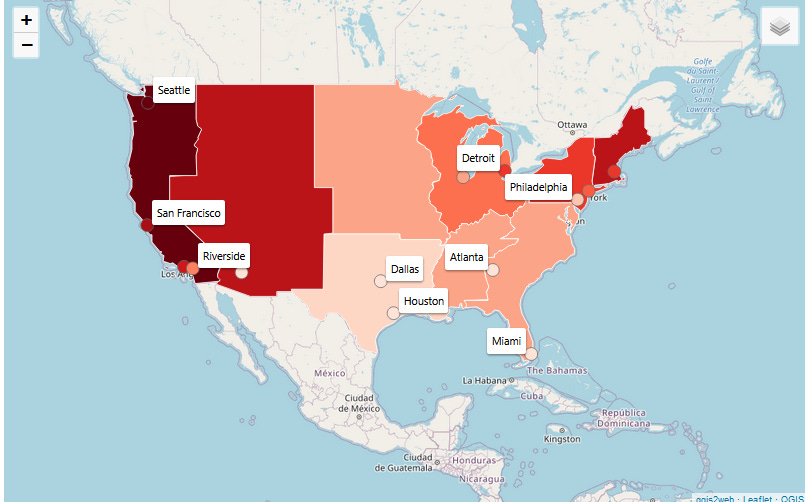
The map’s colors, moving from dark red to pale pink, represent how much housing has AC of any kind - referred to as primary AC- for each US census division or major city. A simple glance at this data validates my usual suspicions about the Northeast and the Pacific, as opposed to the Southeast and Gulf states. But let’s get more granular. Let’s look at some graphs.
First, let’s consider the city data, which covers America’s 15 biggest metros and was collected by the AHS in 2015. (You can look at my spreadsheet on Google Sheets here). As you can see, Seattle, San Francisco, and Los Angeles are the real outliers here. Meanwhile, Boston and New York seem to have a pretty high percentage of homes with air conditioning. So what’s my beef with Northeastern AC?

The graph below demonstrates what the problem is. When you compare how many homes in Boston, Philadelphia, and New York have room air conditioning – IE, window or portable units – versus how many homes elsewhere in the US have central air conditioning, then a glaring Northeastern pattern emerges. If you do have air conditioning in these cities, it’s way more likely to come in the form of a horrible metal box you have to install yourself.
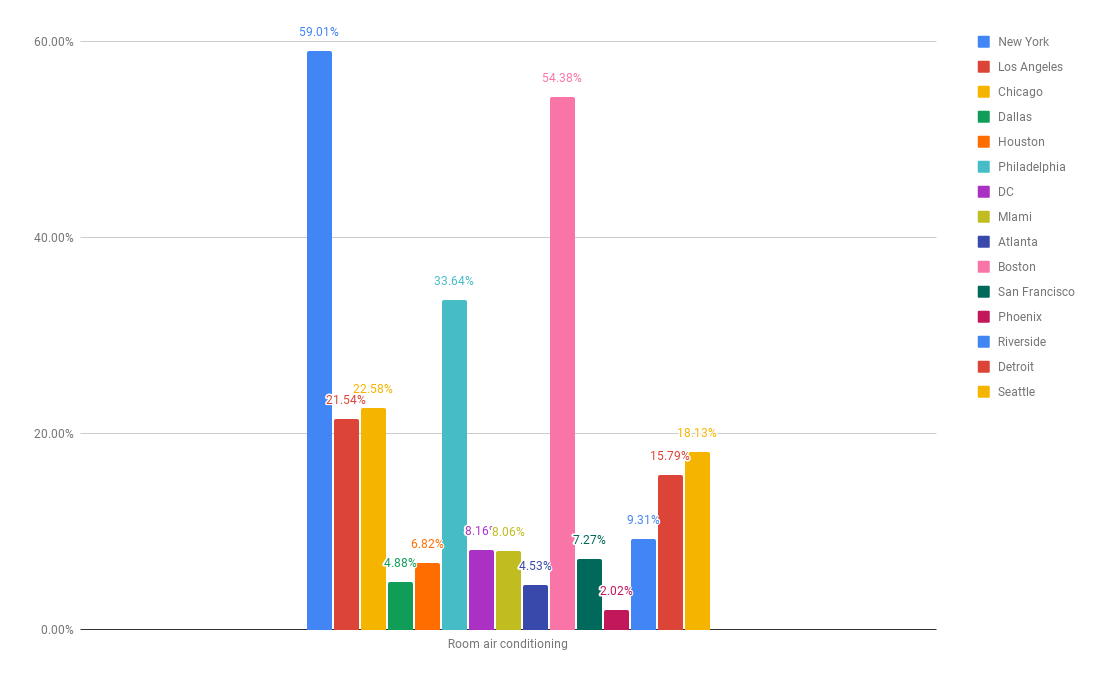
If we flip this around and look at how many homes have luxurious central air in these major cities, Boston and New York aren’t doing that much better than San Francisco and Seattle.
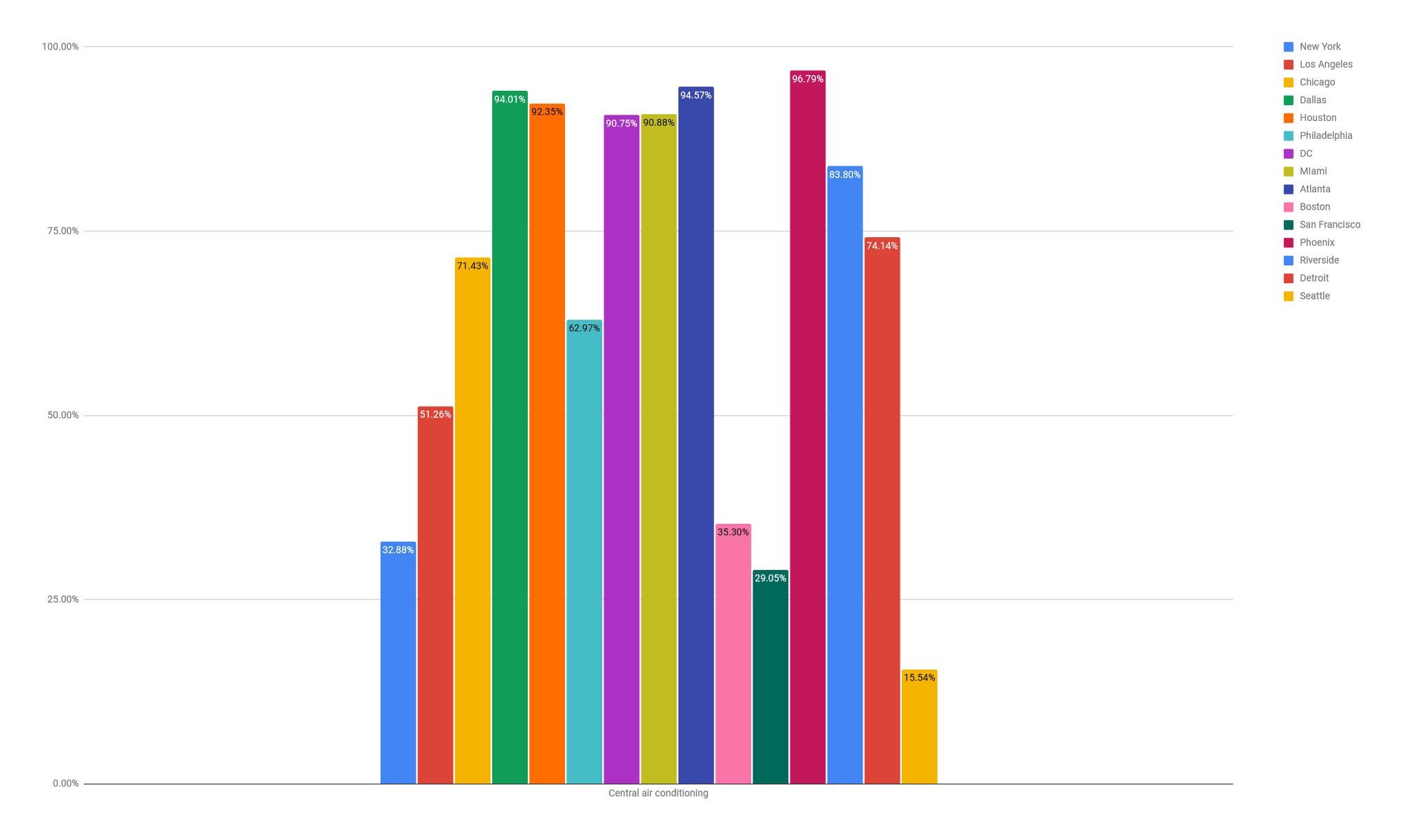
The regional census data tells a very similar story. While New Englanders are only slightly less likely to have some kind of AC than the rest of the country (excluding the poor, sweaty Pacific)…..
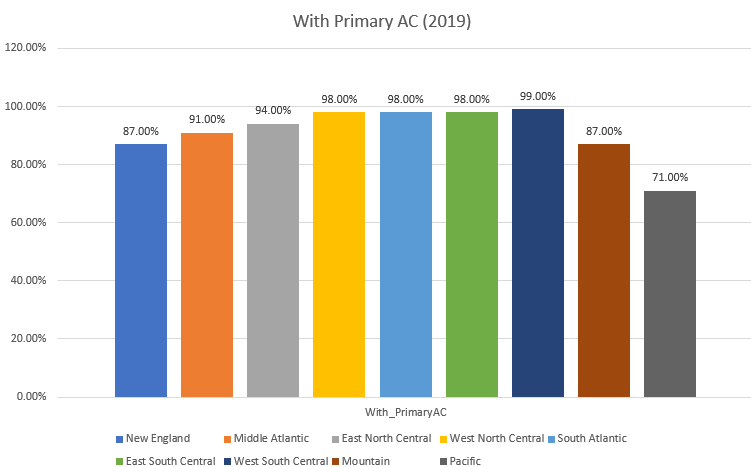
It’s evident that New England and the Middle Atlantic (which contains New York and Philly) are dominated by the scourge of window air conditioners….

Which is accompanied by a reverse lack of central AC in those regions.
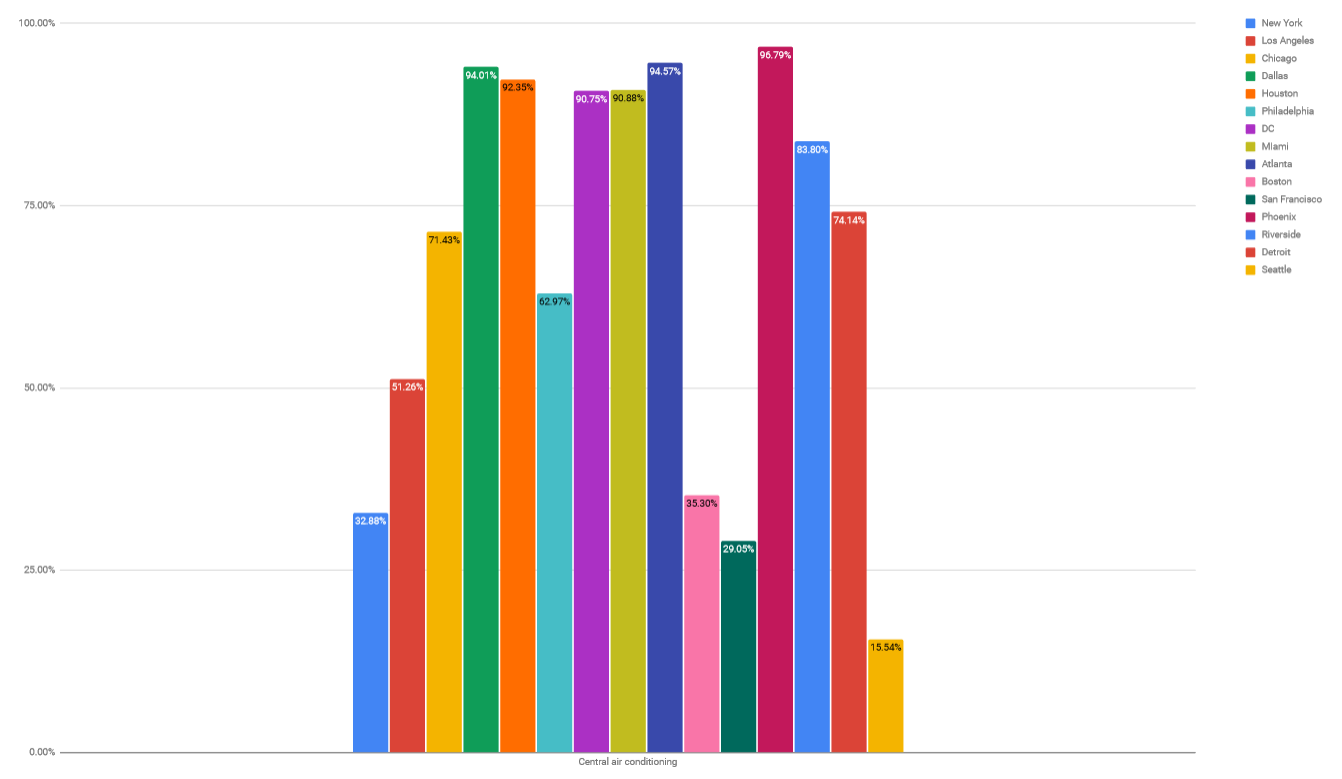
So why do I have such a weird vendetta against window air conditioning? And why does all this matter (beyond the fact that putting it together, perversely, made feel better?) Let me explain.
I’ve moved a lot around the US and the world over the years, but until I moved to New England, I’d never actually used a window air conditioner before. I’ve lived around the world, and I’ve used everything else, from ductless mini split air conditioners (very popular in Southeast Asia) to central AC to swamp coolers to fans. But not window units.
So I was shocked to find that in the Boston area, even very nice houses occupied by people with lots of money usually have no central air. Far as I can tell, many Bostonians simply resign themselves to (A) spending a solid chunk of each summer macerating in a pool of their own sweaty juices, or (B) hustling a gigantic and heavy air conditioning unit up from the basement, securing it in a window in such a way that it doesn’t fall out and brain passer-by, and then taking it down again in the fall.
(Lest Northeasterners get too smug about the climate-virtuousness of this, let me remind you that heating homes usually uses way more energy than cooling them does).
Historically, the Northeast’s grim Puritanical approach to air conditioning made perfect sense. Housing is old up here, and the Northeast, even within living memory, used to be a much cooler place.
But it won’t make sense for much longer. We’re seeing more and more heat and humidity, and while it’s unpleasant and productivity-destroying for young people to go without decent air conditioning, it can be deadly for older, unhoused, and less healthy people without it. While we do need to balance air conditioning use against carbon emissions, we’re still going to need more of it if we want to keep vulnerable people alive in a warming world.
Heat waves have killed hundreds in recent years in supposedly nice temperate places like Chicago and Western Europe. And the pattern is only going to get worse. Places with low rates of any air conditioning at all, like the Pacific Northwest, will have to scramble to ensure that more people have access. That’s going to mean retrofitting homes, rethinking the electric grid, and helping people pay for air conditioning who can’t afford it, among other measures.
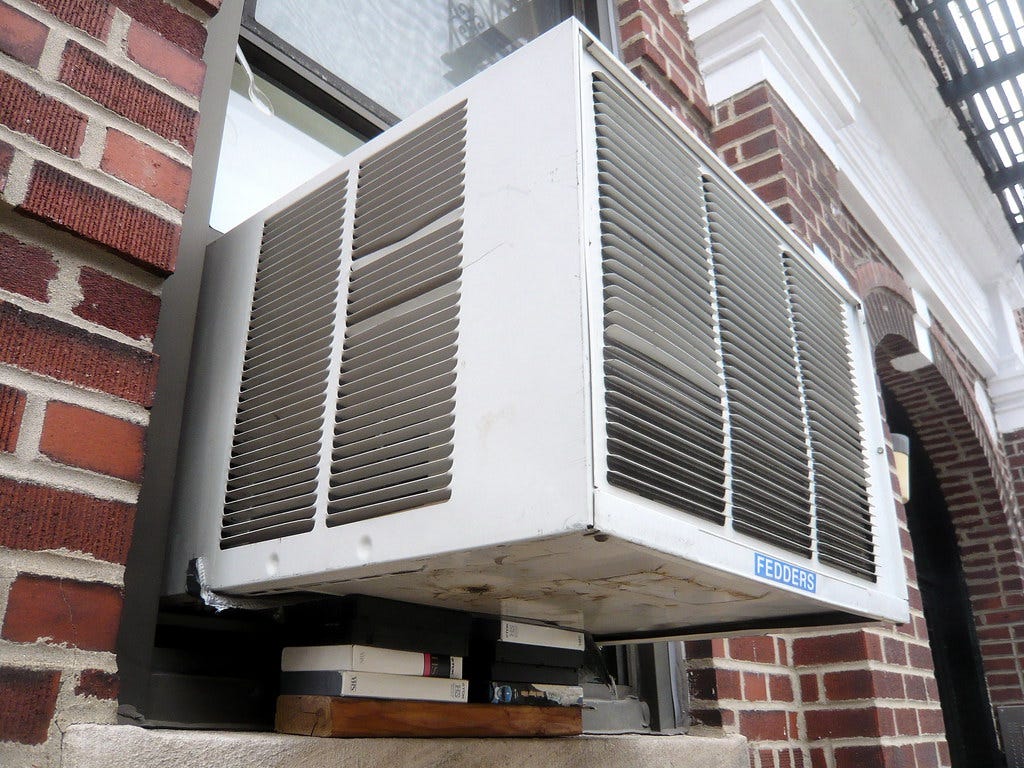
Meanwhile, the Northeast and its plague of shitty window units will face its own challenges. While I hope that more landlords will retrofit their ancient properties to install central air or ductless AC, most of us are going to be stuck with window units for a while. And window units are, as I’ve emphasized, are a unwieldy pain in the ass. Many people will need assistance to install them. We can’t expect a 90 year old or a disable person to hustle one of those finger-slicing monsters up two flights of stairs themselves. Many of these people also won’t be able to pay for that help outright, or know where to find it on their own. They’ll need help with that, and it will likely need to be mandated by law.
Then there’s the disquieting fact that in the United States, plenty of people’s landlords are given legal latitude to ban tenants from using air conditioning at all.
While most states and cities mandate landlords provide heating, few places other than Arizona and Dallas legally mandate air conditioning. California law, for example, views air conditioning as an “amenity,” while the law in Massachusetts doesn’t deem it as a necessary requirement for a rental property. During the June heat wave in the Pacific Northwest, many renters in Portland and Seattle had the displeasure of discovering that it was perfectly legal for their landlord to bar them from putting in a window air conditioning unit.
Some landlords claim they do this because of insurance liability, as they’re worried about the risk of an air conditioner falling out of a window and squashing someone. In light of the recent rash of heat waves and heat deaths in the US just in June, perhaps they should be considering their liability if their tenants boil to death in their own homes - which is what likely happened to at least 54 people in Oregon this June.
If there’s one thing I’ve learned from this exercise? We need to pass laws that mandate access to air conditioning for renters, and we need to do it now. These rules should be treated with the same seriousness as the rules that mandate access to heat. It’s high past time that we stopped treating air conditioning as a luxury - I’m looking at you, Northeast - and more like the life-saving tool it is.
